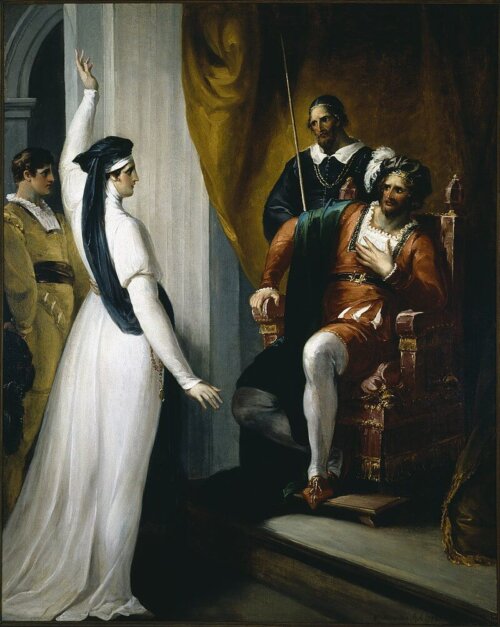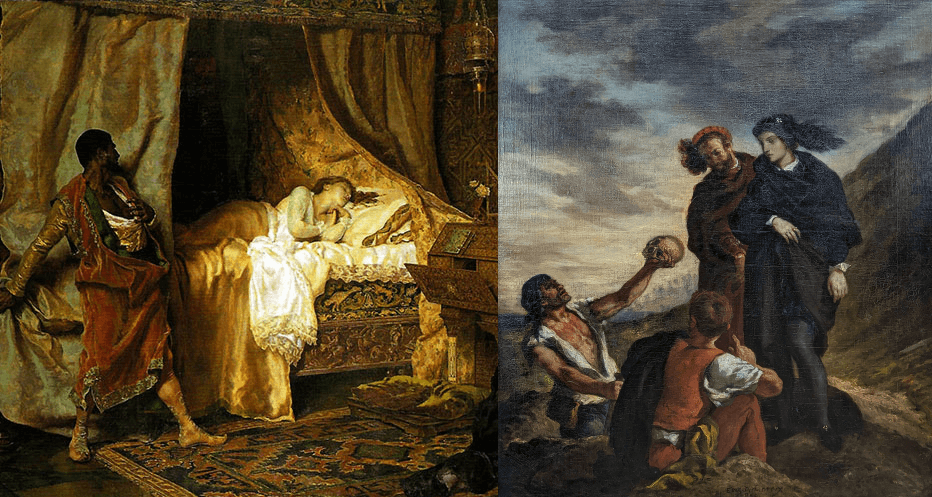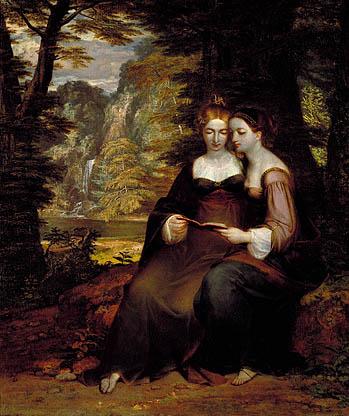J.S Bach and the Musical Mind

“To strip human nature until its divine attributes are made clear, to inform ordinary activities with spiritual fervor, to give wings of eternity to that which is most ephemeral; to make divine things human and human things divine; such is Bach, the greatest and purest moment in music of all time.” —Pablo Casals
Among the great creators of Western classical music, Johann Sebastian Bach has long held the most exalted place. It is commonly held that Bach summed up the course of music until his time—the first half of the 18th century—and that the subsequent history of music stems from him. Bach’s high status has made him seem more rarefied and remote than Mozart or Beethoven, his nearest peers in the composers’ pantheon (and who also recognized Bach as supreme). A provincial church musician who never traveled outside Germany, he wrote music for his community and for the glory of God, and his immense significance was not recognized until after his death. His work is considered to possess an absolute technical purity, perfection, and finish. Bach is the composer’s composer par excellence, a model of musical craft and intellectual genius.
Using the term genius in connection with music emphasizes that music is an expression of mind, a rational ordering of sound, and I would say that Bach’s unique genius consists in the way his music expresses a sense of cosmic order, analogous to Creation. Musicologists speak of his technique of Fortspinnung, the fertile spinning out of small musical motifs into longer phrases. A good example is the Christe eleison from the B-minor Mass, where, as the orchestra unfolds its intricately detailed network of sixteenth notes, there is a feeling that the music could spin itself out to infinity. In this way Bach’s music expresses a sense of eternity yet also a sense of precisely observed time.
This sense of eternity and divinity in Bach’s music comes partly its unity. Bach deals with one affect or mood at a time, without the dramatic contrast that we find in later music. A single movement in a Bach composition is “about” one thing only; once the initial idea has been stated, the rest consists of elaboration or spinning out of that idea in more beautiful and glittering forms. Instead of the drama of opposing forces, we experience in Bach a steady state in which musical bounty unfolds, presided over by a rational order that could be likened to divine providence.
The integrated wholeness and organic unity of his music gives it an essential rightness, a sense that each note follows logically from the last. This is underlined by its consistent rhythmic organization, a steady pulse within which different note values are organized with mathematical precision. Yet syncopation (off-beat rhythm) is present in almost every bar, creating variety and buoyancy. What Bach does is similar to the serene vocal polyphony of the Renaissance master Palestrina, but Bach transfers this into instrumental terms; he even makes his voices perform like instruments. While it’s true that these stylistic elements are typical of what we have come to call the Baroque style, which Bach shared with his contemporaries, nobody practiced them with the depth and perfection that Bach did. Bach’s compositions are more grandly conceived, more thoroughly written, more replete with musical ideas than those of any composer of his time.
One could almost say that in Bach the various elements of music—melody, harmony, rhythm, counterpoint—don’t exist as separate entities; they are closely integrated. Take the famous prelude of the G-major Cello Suite: On the page it consists mostly of arpeggios and scales, but these arpeggios and scales are melodies that are at the same time chords, expressing harmonies that move through impulses of tension and release. Melody and harmony are fused into a single entity. Bach’s melodies typically branch out into countermelodies, becoming an inventive musical conversation, a conversation that carries the listener along on a musical argument. Even a single melody in Bach often contains complex relationships implying a dialogue. Bach seemed incapable of not thinking contrapuntally, incapable of writing one-dimensional music. His combinatory genius, the ability to conceive musical material that can be sounded simultaneously, was most fully expressed in the fugue. This is counterpoint in its most highly developed form, and its highest expression in Bach came in his monumental The Art of Fugue written in his mature years.
Bach possessed the ability to grasp the potentials of any musical idea or situation and the skill to exploit it to the full—not merely as far his audience’s taste would allow, but according to his inner musical ideal. He always thought big, creating grand edifices of sound in which each instrument or voice played a part to give life to the whole. In his works we hear a perfection and intricacy of detail inhering within a grand overarching structure, so that listening to them can be like walking inside a Gothic cathedral.
Through this style of composing, Bach created a musical world that is remarkably consistent and whole, all the works bearing a familiar stamp. Whether he is writing a sacred cantata, an organ prelude, or a violin solo, it is in a sense the same music—that is to say that the fabric of his music is always similarly conceived, with the same contrapuntal procedure and fullness of texture and harmony. In this way Bach suggests a sense of the wholeness of life itself and the unity of the sacred and the secular. Bach often shuffled “sacred” and “profane” musical styles in his music, for example recycling a secular instrumental piece into a sacred one, or using a sacred chant as a foundation for an instrumental piece. In his masses and cantatas, dancelike music is often used to express religious joy. John Eliot Gardiner goes so far as to call Bach’s music “danced religion.” The Bach spirituality is one of both transcendence and imminence, in which both the majesty of God and of the human closeness of Jesus find expression in his religious works.
When a phenomenon like Bach appears in artistic history, one naturally looks for an explanation. How do we account for the fact that the greatest of all composers was a Lutheran from provincial Germany in the early 18th century? It turns out that Bach’s genius was the fruit of a precise cultural inheritance. In the first place, Lutheranism was a strongly musical tradition. Martin Luther was himself a hymn composer and extolled music in church, regarding it as a handmaid to theology. Bach also came by a strong musical inheritance, both from his literal ancestors in the fertile Bach family of musicians and from such spiritual forebears as Heinrich Schütz (the “founder of German Protestant music”), Froberger, Pachelbel, and Buxtehude, as well as Italian Renaissance and Baroque composers. Bach stood poised at a mature peak of musical art, which would rise even higher in what is undoubtedly Western music’s classic period, from Bach through Beethoven—the High Baroque through Viennese Classicism.
Bach’s genius also resulted from sheer hard work. There were no music schools in his day where a budding composer learned his craft. One learned to write music by laboriously copying out the scores of established composers. In this way the young Bach learned how music is put together from the inside and gained an encyclopedic knowledge of musical form and practice. He became a “complete musician,” proficient on any number of instruments and with an inside understanding of every genre of instrumental and vocal music of the time (with the notable exception of opera).
Tradition is an important watchword for Bach, for he is known as one of the great conservatives of music history—one who took the inheritance of his forebears and brought it to high perfection. He upheld solid musical values (such as counterpoint and fullness of harmony) at a time when they were slipping away and becoming unfashionable. Indeed, the music Bach wrote was quite old-fashioned during his lifetime. In a famous passage of criticism, a certain J.A. Scheibe praised Bach’s amazing ability at the keyboard but, when it came to his compositions, complained of the lack of a “pleasing style,” and of “bombast and intricacies.” Audiences found Bach’s music too complex, too artful, and lacking in singable melody. The music world was turning in a lighter direction epitomized by terms like rococo and the “gallant style” (style galant). Bach’s sons composed in this simpler vein, which he disparaged, staying true to his inner vision of what music should be.
The music of Bach was a culmination of sorts, yet musical currents were already going in a very different direction by the time of his death. Thus, his music ends up as a sort of postscript to a previous age as well as a prologue for the future. In the words of musicologist Claude Palisca, “What he did with the resources inherited from his predecessors was a personal triumph”; but he had a greater impact on future generations than he did on his own contemporaries. Mozart’s rediscovery of Bach’s music, at a time when it was relatively neglected, was revolutionary and changed the course of music. Through it, Bach’s influence spread throughout the Romantic era and beyond, and his works became a cornerstone of the repertoire. The loss and recovery of Bach illustrates the truth that time proves the merits of great art, and it is surely not the only instance of something traditional and unfashionable becoming novel and radical.
While Bach’s music can be highly expressive, it is not an individualistic type of expression. You do not get from it a sense of what his personal feelings were; he is expressing something larger than himself: states of the human soul, a universal cosmic order. His polyphony with its multiple melody lines sounding together expresses a communal ideal. Bach said that he composed music “for the glory of God and the refreshment [or recreation] of the human soul.” Music thus fulfilled both a divine and a human purpose, praising God while consoling man. He clearly believed that music was sacred, as reflected in the inscriptions JJ (for Jesu juva, Help, Jesus) and SDG (Soli Deo gloria, to God alone the glory) he affixed to his manuscripts. The 17th-century writer Thomas Browne spoke for the era when he wrote of how music inspired a “deep fit of devotion, and a profound contemplation of the First Composer…a sensible fit of that harmony which intellectually sounds in the ears of God.” [1]
This background of music as “sounding theology” is reflected in Bach’s sacred work, where he sometimes uses musical motifs to depict such ideas as the Fall, the Cross, and Redemption. The few verbal statements of Bach that have come down to us show that he cultivated a sacramental worldview that saw everything he did technically as a musician—even the performance of basso continuo, the filling in of harmonies in a Baroque bass line—as being for the glory of God. Everything in life and art was spiritualized, brought to bear on the permanent things.
John Eliot Gardiner sums it up thus: “Bach is of the very front rank of composers since 1700 whose entire work was geared, one way or another, towards the spiritual and the metaphysical…He saw both the essence and practice of music as religious, and understood that the more perfectly a composition is realized, both conceptually and through performance, the more God is immanent in the music.” *
As a Lutheran, Bach’s sympathies seem to have been with what was known as Orthodox Lutheranism, the High Church faction that cultivated saints’ days and a rich liturgy (the Pietists were the more “evangelical” branch). This Lutheran inheritance in turn connected Bach with the broader Catholic Christian tradition of sacred music, and ultimately with the ethical foundations of music in the classical philosophical tradition, where music was conceived as the “harmony of the spheres” and a moral force in society. This inheritance surely goes a long way to account for the sense of wholeness and universality in his work.
There may well be theological or spiritual elements in Bach’s works that are specifically Lutheran; but to me Bach emerges as a sort of “mere Christian,” a Christian humanist in music. Bach’s musical influences were not limited to Protestant sources but embraced Catholic Italian composers as well. His cantatas and Passion oratorios, his Masses both great and small, are universal Christian statements. All his music, in fact, whether sacred or secular, is suffused with a divine essence expressed in its structure and design, the coherence of all its parts. Music like Bach’s gathers people together in communion with the universal truths it expresses. The notion that a Catholic music lover would reject the music of Bach because he was a Lutheran seems unthinkable. Music and art are unifying forces, joining us under the banner of beauty and truth, and Bach is a great unifying figure of art.
The lofty qualities in Bach’s music are coupled in with the fact that his personal life is mostly unknown. Most of his surviving letters deal with mundane business matters, revealing nothing of his inner life. We know the bare facts of his marriages, his children, the musical jobs he served. All this has contributed to making Bach seem a little severe and remote to many listeners. Mozart has a warmer personality, and Beethoven’s personal struggles have a more direct appeal to us. Leonard Bernstein tells us that he didn’t take to Bach’s music growing up because it seemed to consist of a constant stream of sixteenth notes metronomically ticking away to no expressive purpose. Surely there are listeners out there who react the same way.
But listen closely to the music and you will hear qualities besides cool mathematical precision, including a moving pathos. There’s a reason why in earlier generations Bach’s music was often presented in heavily Romantic trappings: It is perfectly amenable to such treatment, indeed to any number of interpretations. The early music movement of more recent times has taught us how to approach Bach in a way that is more faithful to the aesthetics of his era. This includes the idea of music as “sounding rhetoric” (one critic of Bach’s time praised him as a “musical orator”), and the dancelike approach to rhythm that lifts the music from the page. We also understand better now that the endlessly chugging “little notes” are to be understood, not as a “celestial sewing machine,” but as akin to syllables in speech, all coalescing into a kind of musical conversation.
A more informed understanding of Bach’s music has also opened our ears to the jollity, good humor, and sheer joy that are present in it. This has often been overlooked, due to overly heavy and humorless performances. We have mentioned the dance element that permeates both the religious and the secular works. Music expert Robert Greenberg hears a divine mirthfulness in the Hosanna from the B-minor Mass, in which holy joy and earthly merriment meet.
Beyond its expressive content, listeners find something pure and elemental in the music of Bach. We hear a supreme intelligence working on music’s basic building blocks. Although it typifies what we have come to call the Baroque era in music (Bach and his peers knew no such term) it is timeless, tied to no particular era, and beyond changes of fashion. This is because the way it is put together, its inner logic and outer euphony, is not dependent on time-bound stylistic details. It is composed of the basic good stuff of music, and this makes it universal and durable. Its emotional passion—which can be intense, as in St. Peter’s aria of remorse in the St. Matthew Passion or the slow movement of the E-major Violin Concerto—exists within the bounds of a calm, intellectual order. While music, for Bach, reflects man’s rational nature, its mysterious essence ultimately carries it beyond reason.
In this way Bach shows how mind and soul, spirit and body connect. In its complex richness and wholeness his music suggests the unity of faith and reason, science, and imagination. Full of relationships that stimulate the ear and the mind, it expresses the multifold splendor of creation itself. This has made it both an ideal for composers to aspire to and a wellspring that audiences return to again and again for serious listening that refreshes the soul. In this way Bach has proved to be both the source and summit of our Western music.
* John Eliot Gardiner, Bach: Music in the Castle of Heaven, Alfred A. Knopf, 2013, p. 17.




